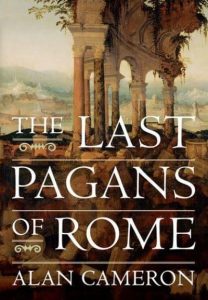The Romans had many different ideas about life after death. The traditional view was that the soul separated from the body, then traveled to the realm of the dead, the world ruled by Pluto (Hades in Greek). The various philosophical schools had other ideas.
"The Roman emperor and Stoic philosopher, Marcus Aurelius, offered three possibilities, 'extinction, dispersal, or survival (Med. 11.3).' The first possibility is that the Mind, cut off from the brain that produced it, is extinguished forever. The second possibility offers some consolation but amounts to the same thing. The body dissolves and its component parts are recycled by Nature to create new life. . . . The third possibility is that the mind and other component parts of the human form survive death."
The Stoics were vague about life after death. They emphasize the Good Life here and now, and that's been my default position as well. I fell in love with Marcus Aurelius in high school, and never quite got over him. For most of my adult life I've had a copy of Meditations on my bedside table.
Even so, for all practical purposes I'm a Neoplatonist. Although it's not obvious, Neoplatonism is the philosophy behind astrology, and other traditional occult sciences. So, the soul survives death and continues its journey toward ascent and eventual reunification with the One.
It's well worth exploring the different philosophical schools, here. There's a lot more nuance than just Heaven / Hell / Reincarnation.
More Information
- M. Horatius Piscinus, "We Are Not Forgiven" at Patheos <patheos.com> (June 28, 2013).
- M. Horatius Piscinus, "What Really Happens When We Die?" at Patheos <patheos.com> (June 29, 2013).
- M. Sentia Figula, "The afterlife" at Neo Polytheist <romanpagan.blogspot.com> (May 20, 2016).
